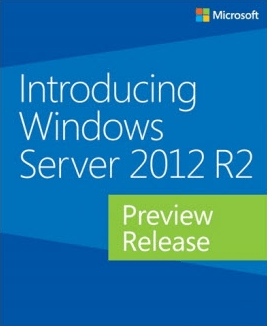 Windows Server 2012 has brought quite a few new elements and services to the cloud administrator’s table, including enhancements of virtualization and cloud computing features, the introduction of storage spaces and ReFS, and an improvement in active directory services. Microsoft recently released a preview version of Windows Server 2012 R2, a version rich with cloud and virtualization components. This blog post looks at some of the primary features offered by the Windows Server 2012 R2 preview release and how they’ll help you become a more efficient cloud provider for each of your clients.
Windows Server 2012 has brought quite a few new elements and services to the cloud administrator’s table, including enhancements of virtualization and cloud computing features, the introduction of storage spaces and ReFS, and an improvement in active directory services. Microsoft recently released a preview version of Windows Server 2012 R2, a version rich with cloud and virtualization components. This blog post looks at some of the primary features offered by the Windows Server 2012 R2 preview release and how they’ll help you become a more efficient cloud provider for each of your clients.
1. Generation 2 Virtual Machines
With Windows Server 2012 R2, Microsoft is unveiling a new virtual machine, the Generation 2 Virtual Machine. Gen 2 VMs are more flexible and have faster boot times than the previous versions. Faster boot times and more flexibility means our engineering teams can get your cloud resources online faster so you can provide the highest level of service to your clients.
Generation 2 VMs also support a new operating architecture that doesn’t need hardware emulation. This enables features such as a UEFI based virtual machine, and supports Secure Boot and boot-up using iSCSI and other network adapters. Eliminating the BIOS-based overhead and the functionality of traditional virtual machines also reduces the size of the virtual machine, which means there’s more space for your clients to use for storage. If you’re looking to provide your clients with a solution that will make the most out of their available resources, Gen 2 VM’s with Server 2012 R2 will help you get there.
2. Support for VM Replication
Windows Server 2012 Hyper-V has supported replication of only a single target. This is time consuming and complex, particularly for the IT and cloud service provider acting as both a source and target of the replication machine. Server 2012 R2 simplifies this process. How? Keep reading…
Server 2012 R2 introduces native support for replicating multiple instances of a virtual machine. With a single action, administrators can create one replica for on-premise storage and a second replica to be sent to an off-site facility. If you have a risk averse client who wants the peace of mind that comes with multiple copies, VM Replication as part of Server 2012 R2 will help you address those concerns.
The Hyper-V replica can be configured to send a replica instance every 30 seconds to a secondary site and every 15 minutes to a third-party site. The storage of historical copies of virtual machines has also been reduced to enable better storage utilization and management.
3. Compact and Faster Migration
Server 2012 R2 introduces several migration-related features that streamline and optimize the process of migrating live VMs. R2 reduces the size of data that is passed over the network to speed up the migration process, which is going to enable Awesome Cloud to become a more efficient provider for your client base. With SMB Direct on a 10Gb or more Ethernet connection, Server R2 will be able to improve the migration time and performance by up to 10 times. Standard compression only doubles the performance.
4. Runtime VHDX Resizing
Server 2012 R2 supports the storage upscaling and downscaling of virtual hard disks attached to each virtual machine. The resizing process is applicable on all virtual hard disks (VHDX) that are attached to the virtual machine using SCSI controllers, and can be completed without shutting the virtual machine to offline mode. Based on requirements, the size of the VHDX can be expanded or reduced. VHDX resizing can be performed using the System Center Virtual Machine Manager 2012 or through the PowerShell command prompt mode.
5. Storage QoS
Server 2012 R2 provides the ability to manage the number of IOPS a VM can perform, which enables capping the number of IOPS each VM performs, effectively managing access to the underlying physical storage device by all VMs. IOPS are tracked and measured between the physical disk and the VM.
Administrators can put a lower and upper cap on the number of IOPS separately for each virtual machine. This feature is specifically useful for cloud service providers with multiple tenants on the same server. Enabling storage QoS will prevent an IOPS-intensive VM from disrupting IOPS operations on other VMs. That translates to an improved level of service.
Learn More About Windows Server 2012 R2
Windows Server 2012 R2 will receive its official international release in late 2013. The advanced new features and services it has to offer will certainly be compelling enough to ensure that it is widely implemented. As a strong proponent of Microsoft cloud solutions, I can assure you that Awesome Cloud Services will support the delivery, deployment, and integration of Windows Server 2012 R2 as soon as possible. Fore more information about Windows Server 2012 R2, please send an email over to [email protected].





